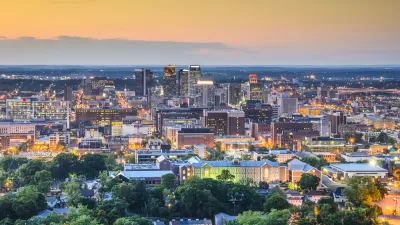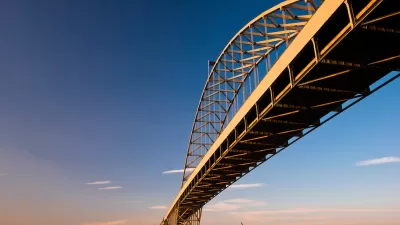Cities and states say the American Rescue Plan Act has been crucial to keeping the lights on during the pandemic, but some Republican lawmakers denounce spending on projects unrelated to COVID relief.

"A year after President Biden signed the $1.9 trillion American Rescue Plan Act into law, states and localities have used their $350 billion share of direct aid to provide Covid-19 vaccines, give workers on the frontlines of the pandemic extra pay, and to boost local economies." But as Kery Murakami reports, some lawmakers are questioning spending on projects that aren't pandemic-related. "For instance, states have earmarked the money to build monuments, create museums, tear down at least one abandoned university dormitory, and to carry out construction on courthouse buildings, according to a National Conference of State Legislatures database."
"This criticism has grown as more states report budget surpluses and as the GOP, during a midterm election year that will decide control of Congress, is seizing on the idea that the spending Democrats backed in the American Rescue Plan has contributed to a rising wave of inflation," writes Murakami. "The 152 cities and counties the National League of Cities, Brookings Metro and the National Association of Counties have been tracking have only decided what to do with 48.6% of their ARPA dollars."
Supporters of ARPA say it "has been instrumental in helping state and local governments weather the pandemic's economic fallout and for supporting their response to the health crisis" by replacing lost revenue and helping cities maintain essential services.
The source article details how states have spent ARPA funds so far and the rationales given for the projects.
FULL STORY: One Year Into ARPA Rollout, Spending Varies as Scrutiny Mounts

Planetizen Federal Action Tracker
A weekly monitor of how Trump’s orders and actions are impacting planners and planning in America.

San Francisco's School District Spent $105M To Build Affordable Housing for Teachers — And That's Just the Beginning
SFUSD joins a growing list of school districts using their land holdings to address housing affordability challenges faced by their own employees.

The Tiny, Adorable $7,000 Car Turning Japan Onto EVs
The single seat Mibot charges from a regular plug as quickly as an iPad, and is about half the price of an average EV.

Seattle's Plan for Adopting Driverless Cars
Equity, safety, accessibility and affordability are front of mind as the city prepares for robotaxis and other autonomous vehicles.

As Trump Phases Out FEMA, Is It Time to Flee the Floodplains?
With less federal funding available for disaster relief efforts, the need to relocate at-risk communities is more urgent than ever.

With Protected Lanes, 460% More People Commute by Bike
For those needing more ammo, more data proving what we already knew is here.
Urban Design for Planners 1: Software Tools
This six-course series explores essential urban design concepts using open source software and equips planners with the tools they need to participate fully in the urban design process.
Planning for Universal Design
Learn the tools for implementing Universal Design in planning regulations.
Smith Gee Studio
City of Charlotte
City of Camden Redevelopment Agency
City of Astoria
Transportation Research & Education Center (TREC) at Portland State University
US High Speed Rail Association
City of Camden Redevelopment Agency
Municipality of Princeton (NJ)





























